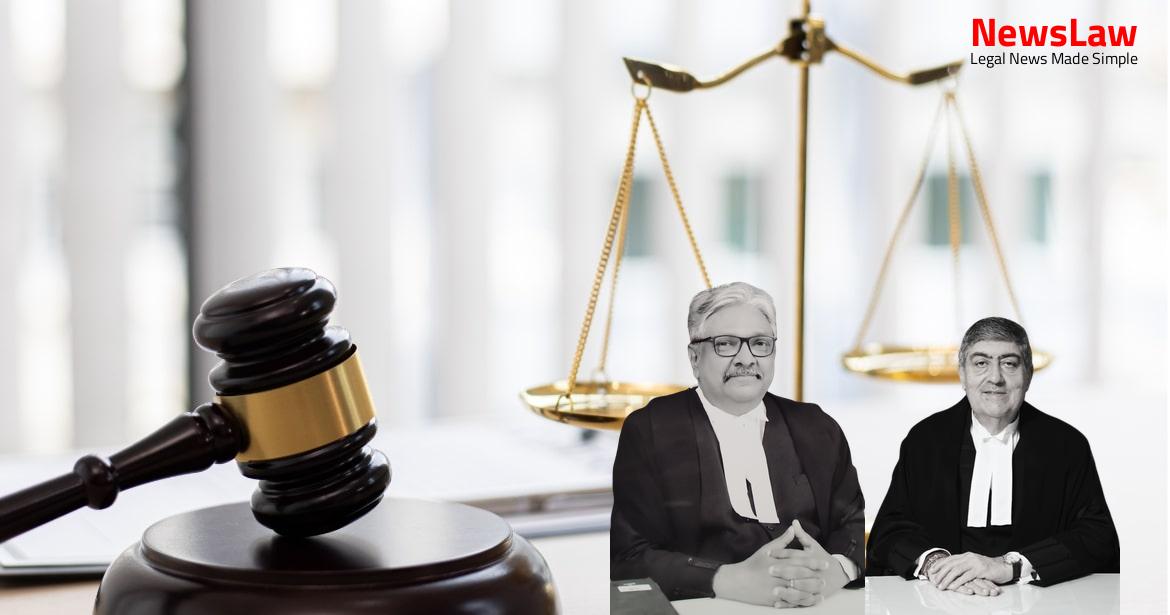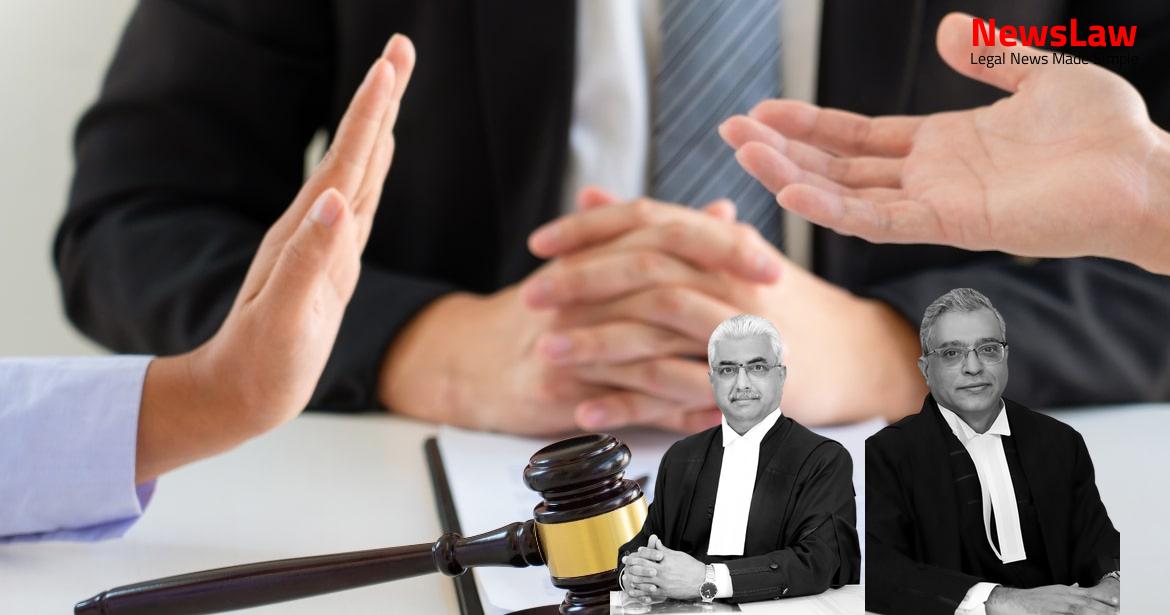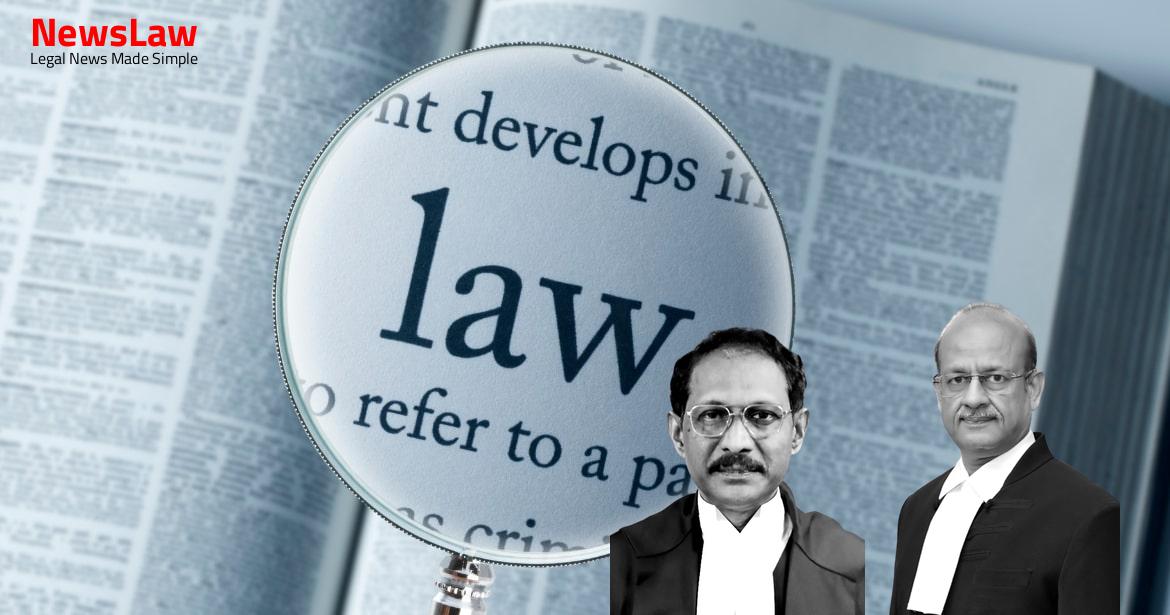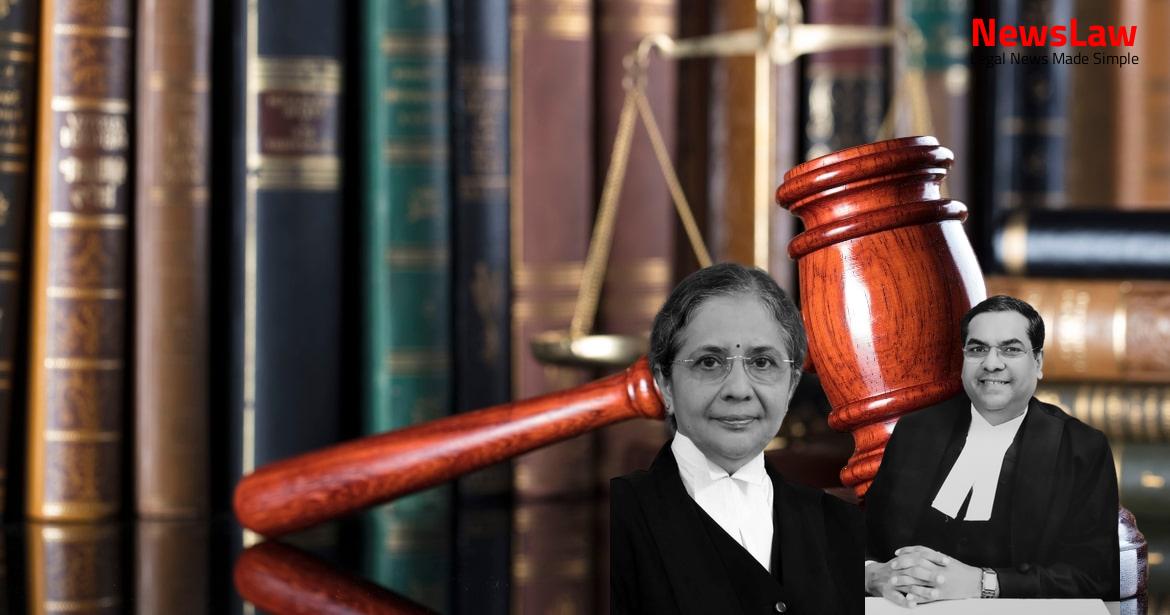In a significant legal development, the Supreme Court of India has delivered a crucial judgment in the eviction case concerning Room No.3/471, 3/472, and 3/476. The case revolved around the alleged subletting and non-payment of rent, leading to a complex legal battle between the parties involved. Let’s delve into the details of this intriguing case and explore the legal intricacies at play in this notable Supreme Court decision.
Facts
- Eviction was granted for rooms 3/472 and 3/476 in the order dated 9.7.1998.
- Appellants appealed the decision before the appellate authority.
- Sub-letting was not proved for Room No. 3/472, but was proved for Room No.3/476.
- Appellants argued that there was one tenancy with different violations in different portions of the property.
- The ownership rights were transferred to the appellants in 1986.
- Cross-revision petitions were filed by both sides in the High Court of Kerala.
- Eviction was sustained for Room No.3/476 due to sub-letting.
- Special Leave Petition was filed by the appellants in response to the order dated 30.10.2007.
- Eviction petition was filed under Sections 11(2), 11(3), 11(4)(i) & 11(4)(ii) of the Kerala Buildings Act.
- Rent Control Court granted a decree of eviction for all three shops on the grounds of non-payment of rent.
- Appellants sent a legal notice demanding surrender of possession and arrears of rent.
- Original respondent stopped rent payments after November 1987.
- Appellants claimed a bona fide need for the premises and alleged subletting without consent.
- Transfer/assignment of ownership was intimated to the original respondent in May 1986.
- Eviction order allowed one month for the tenant to deposit arrears of rent to vacate the eviction.
- Bona fide need of the appellants was not found for Room No.3/471, while it was proved for Room No.3/472.
- Room No.3/476 had sub-letting proved against it.
- The three rooms in question were 3/471, 3/472, and 3/476.
Also Read: Supreme Court Judgment on Single Till Mechanism for HRAB Calculation: A Comprehensive Analysis
Analysis
- The legal foundation to raise a case is mandated, including in the grounds of appeal.
- A pure question of law can be examined at any stage, even before the Supreme Court.
- The notice sought to be contended under Section 11(4)(i) of the said Act implied eviction from the whole premises upon sub-letting part of it.
- The plea of sub-letting one room for eviction from the entire tenancy premises was never urged before the trial court or appellate court.
- The statute implies passing an eviction order in respect of the whole premises if one tenancy is created.
- A judgment covering the legal principle was referred to for guidance.
- In this case, a single tenancy was in existence, even though different violations were alleged for different portions.
- Sub-letting any part of the premises entitles the landlord to seek eviction from the entire premises.
- The landlord must send a registered notice before applying for eviction in case of sub-letting.
- The essential facts indicate the existence of a single tenancy, as analyzed by lower courts.
- The partition of premises does not divide the original tenancy for the purpose of eviction orders.
- Both shops were subject to eviction due to sub-lease in one of them.
- There was a single tenancy, but sub-letting was done for one of two shop rooms.
- Examining legal consequences of factual foundation is a pure question of law.
- The concurrent finding by all courts necessitates examination of the sole plea available.
- A single notice and eviction petition were filed for all three shops/rooms.
- The provision and judicial pronouncements support eviction from entire premises upon any sub-letting.
- The aspect of single tenancy was not disputed in the eviction petition, notice, and reply.
- The case does not involve a bona fide requirement for eviction.
- The plea should be examined despite not being raised earlier due to its legal nature.
- The cause for eviction arises upon the tenant transferring and sub-letting the building or any portion as per Section 11(4)(i) of the Act.
- The tenant cannot transfer his right under the lease or sublet the building without the landlord’s consent.
- A landlord can apply for eviction if the tenant transfers or sublets the property without permission.
- The landlord must send a registered notice to the tenant before applying for eviction.
- The tenant has 30 days to terminate the transfer or sublease after receiving the notice.
- The definition of a ‘building’ as per Section 2(i) of the Act is also mentioned.
- A separate application was filed for permission to urge additional grounds
- This course of action was already examined and approved by the Court in Chittoori Subbanna v. Kudappa Subbanna
- Lord Watson’s observation in Connecticut Fire Insurance Co. v. Kavanagh emphasized considreing questions of law in the interests of justice
- The Court is inclined to scrutinize questions of law raised at the final court stage
- The facts of the case are undisputed
- The only question is whether the issue is a question of law worth examining
- Judicial pronouncements in M. Meeramytheen & Ors. v. K. Parameswaran Pillai & Ors. are considered
- The appellants were entitled to a decree of eviction for the entire premises based on the ground of sub-letting a part of the premises by the respondents.
- The legal consequence of sub-letting a portion is vacating the entire premises.
- The appellants did not have to allege sub-letting of the whole premises if it was only a part.
- The respondents had the opportunity to file cross-objections or cross-appeals but chose not to.
Decision
- The appeals have been allowed and the parties will bear their own costs.
- The respondents have been granted six (6) months to vacate the premises.
Also Read: Selection and Appointment of Judicial Officers in Himachal Pradesh
Case Title: K.LUBNA Vs. BEEVI (2020 INSC 33)
Case Number: C.A. No.-002442-002443 / 2011



